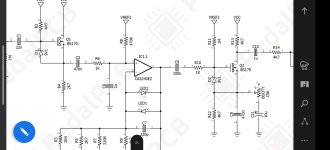Thanks everyone. I’ve been building pedals for about a year and a half, but am just starting to learn exactly what goes on in the circuit. Plus being kind of noob in reading schematics. I learn so much everyday. I’m a welder by trade, but after 30 years, I think I should of became an electrician.
Let me tell you a story...
I was on a jobsite with an electrician one day. We were both up in the ceiling, I was working on fixing a limit switch on a fire smoke damper, he was fucking around in a junction box.
We get to chatting. Turns out he's fully bought into some conspiracy nonsense, so I talk with him because I'm facinated by this particular flaw in human reasoning.
He starts explaining to me how there's two parts to everything in the galaxy. Black and white. Good and evil. Protons and Neutrons. Life and dea....
"Hold up" I said, incredulous, "Back up, that bit about protons and neutrons"
"Yeah?" he responded, dull glaze in his eyes
"Aren't you forgetting something there?"
A more flummoxed expression, I have never seen. He eventually conjured the will to utter a single syllable: "Huh?"
"Electrons," I said, exasperated. "Protons, Neutrons, and
electrons"
.......
............
.....................
"What's an electron?" the *electrician* eventually replied.
True story. Hell, at least as a welder you're working with DC on a regular basis. I'm an HVAC service tech, so my background is all alternating current, inductive loads, and relay logic. We're all learning here.
So...alright, static discharge. I can wrap my head around that. Zeners are cheap, warranties are expensive.
...that'd have to be one hell of a shock. I can appreciate a mindset that leans heavily on the "overbuild it" side of things though.


